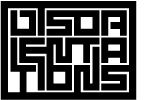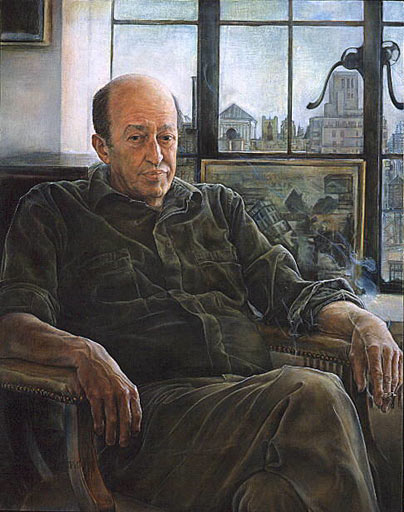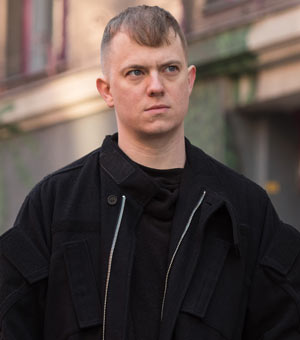The “Lost” Art of Art Criticism
by Travis Jeppesen on March 31, 2008
In a recent editorial addressing the endless debates over criticism’s role in the current art world, Damon Willick argues that such debates often reduce the so-called crisis to a binary opposition – Greenbergian formalism vs. postmodernism. Proponents of the former accuse the postmodernists of academic obscurity, political correctness, and an inability or unwillingness to pronounce judgment on the quality of a work, while the postmodernists accuse the formalists of being elitist and conservative in their defense of the canon. Reverting to a past model – i.e. Greenbergian formalist – is inappropriate for historic reasons, as much of the art being produced today is coming out of a worldview informed by postmodernism, post-structuralism, and all the other posts we lug around with us, whether out of laziness or a sense of defeat. Willick denies that there is anything remotely resembling a crisis in either art or art criticism, arguing that criticism must adapt itself to the conditions of the present rather than prolonging a never-ending debate that is binaristic, and hence reductive. (In arguing thus, Willick is of course aligning himself with the postmodernists, whether he realizes it or not – ultimately, one cannot escape one’s education or position in the historical present, and this is something that Willick argues as well.)
I agree that it would be pointless to revert to a Greenbergian mode of formalist discourse when writing about art. It would be almost like if a novelist, bemoaning the state of the novel in the 21st century, reverted to penning novels in the style of Charles Dickens. But I also feel that Willick misses some important points – as did Clement Greenberg, and all the other “authorities” typically cited in these endless debates.
What is at stake here is language and the ways in which it is deployed. The debates over the purpose of art criticism seem to ignore the simple, basic fact that the art of art criticism is in fact a literary art.
Greenberg decried the poetic obtuseness of criticism in his time in favor of a direct form of plainspeak that was meant to convey the critic’s judgment of the artwork’s aesthetic worth.
The postmodern, or late 20th century/early 21st century model of art criticism, according to people like Willick, is rooted in the verbosity and heady conceptual paradigms of (mostly French) critical theory – a language that the layman could never comfortably enjoy.
By insisting on aligning yourself with one of these two camps, Willick infers, you are limiting yourself as a critic.
What Willick neglects to observe is that, if there is a threat to art criticism, it is neither the formalist impulse, nor the jargon-laden antics of the posts, but the social conditions of the art world. Most of what passes for art criticism these days is not criticism at all, but propaganda. The dialect that has been adapted by most working in the art world is PR-speak. When concepts borrowed from critical theory creep into this language, it is almost always in a debased, watered-down form that shows little understanding of these concepts’ potential applicability to the works under scrutiny. The malaise that art criticism in fact suffers from does have a name, and it has nothing to do with the binary described by Willick: in a word, it is a lack of integrity. Once you are in a position where the market dictates all the terms and conditions, then language follows suit, and you are no longer living under conditions of great possibility, but under intellectual slavery.
Another point that Willick fails to pick up on – and this might have something to do with the fact that he is writing as an academic – is the fact that not only is Greenbergian formalism outmoded, but so is the po-mo discourse that he assigns to such figures as Arthur Danto and Katy Siegel. No one but the most naïve undergraduate is going to be impressed by your “deconstructive reading” of a work of art in 2008. Readers are much more interested in the prices that works fetch at auction than they are in that sort of (pseudo-) mystification. The monetary value naturally also takes precedence over the aesthetic value that any one critic may attempt to assign.
I’m not about to argue that criticism’s central task should be to take on all the corruption rampant in today’s art world. But anyone who practices art criticism today should be mindful that it is not their duty to uphold individual careers, but to find new ways of engaging with works of art through the medium of language. If there is anything to complain about, it is the fact that in most criticism these days, one finds a stunning lack of multidimensionality in writers’ ability to think about language. Every sentence construction conforms to a certain crude type, readers become bored with the monotony and give up on criticism altogether, and the writers gripe about being ignored.
Art criticism must continue to grow and develop alongside the art that it takes for its subject, while remaining mindful of the seemingly paradoxical premise that history is not a linear progression, but comprised of cyclical occurrences. Rather than dismissing Greenberg or anyone else out of hand, such writers should be acknowledged as useful referents – but not as a foundation. Each critic must build their own foundation in seeking out new languages and new forms with which to engage – and pass judgment on – the objects and images they surround themselves by. Only then will we see a solution to what I suspect the real problem that Willick and so many others are grappling with – the lack of a veritable renaissance in contemporary art criticism.



4 comments
[…] The “Lost” Art of Art Criticism: […] if there is a threat to art criticism, it is neither the formalist impulse, nor the […]
by faul « HoertAuf on April 4, 2008 at 12:19 pm. #
Perhaps their is a correlation between the quality of “ The Lost Art of Art Criticism” and quality of the work/ art. One may depend on the other to raise the stakes. The bar is made to jump over, not to crawl under.
by Ben on August 30, 2009 at 3:28 pm. #
You’re absolutely right! It IS mostly PR-speak, and unfortunately it’s hard to imagine that things will be changing in any foreseeable future…
by Natasha Sazonova on May 11, 2011 at 8:09 pm. #
[…] Who: Tyler Green, writer/critic on Modern Art Notes Who: Jerry Saltz, art critic for New York mag Questions in Art CriticismArt critics help viewers perceive, interpret, and judge artworks. Both art…prises various experts anxious to develop international co-operation in the fields of artistic […]
by 7 Art Critics Sites :: Gaia Gallery on October 12, 2011 at 1:23 pm. #